There are many ways to make a living as a full-time RVer, but many require a reliable internet connection. Being a successful digital nomad is only possible with the ability to log on from anywhere, which is why many remote workers carry an RV Wi-Fi hotspot wherever they roam.
Sure, most cell phones now include a mobile hotspot that’s handy in a pinch. But that eats into valuable data you may need for other uses. A Wi-Fi hotspot provides a reliable connection for remote work but also has practical applications for streaming your favorite shows, movies, or music when campground Wi-Fi doesn’t cut it.
Do You Need an RV Wi-Fi Hotspot?

Photo by Camping World
So why can’t you just rely on campground-provided Wi-Fi?
Well, you can try. You’ll probably be fine checking emails and browsing some social media. You’ll need a stronger connection if you’re truly working on the road and need the bandwidth for video meetings or anything else that requires faster download/upload speeds.
On my recent cross-country road trip, I intentionally chose campgrounds that advertised Wi-Fi as an amenity. Two of the campgrounds had me stressed about my connection before every work meeting, and the third required an additional fee for a 3-day pass to get reliable Wi-Fi.
Beyond researching the actual quality of a campground’s Wi-Fi before booking, getting a mobile RV Wi-Fi hotspot takes that outside variable out of the equation.
In short, an RV Wi-Fi hotspot prevents connectivity interruptions that can happen when connected to a shared network. It also allows you to enjoy a more reliable internet connection wherever you have a cellular signal.
Technician Tip: Starlink allows satellite connectivity to the internet in areas where a reliable cellular connection isn’t available. Learn more about Starlink internet for RVers.
How Does an RV Wi-Fi Hotspot Work?
Mobile hotspots for RVs utilize the same cellular networks (4G and 5G) as cell phones. They receive a signal from the network and convert it to a Wi-Fi signal. That signal is then available for nearby devices to connect to, so long as you have the network ID and password.
When you set up your hotspot, you’ll typically choose a data plan through your preferred carrier. Most Wi-Fi hotspots support multiple devices, but they can be capped by data limits set by your chosen plan. The process for monitoring how much data you’ve used varies by hotspot manufacturer.
Wi-Fi Hotspots versus Cell Signal Boosters
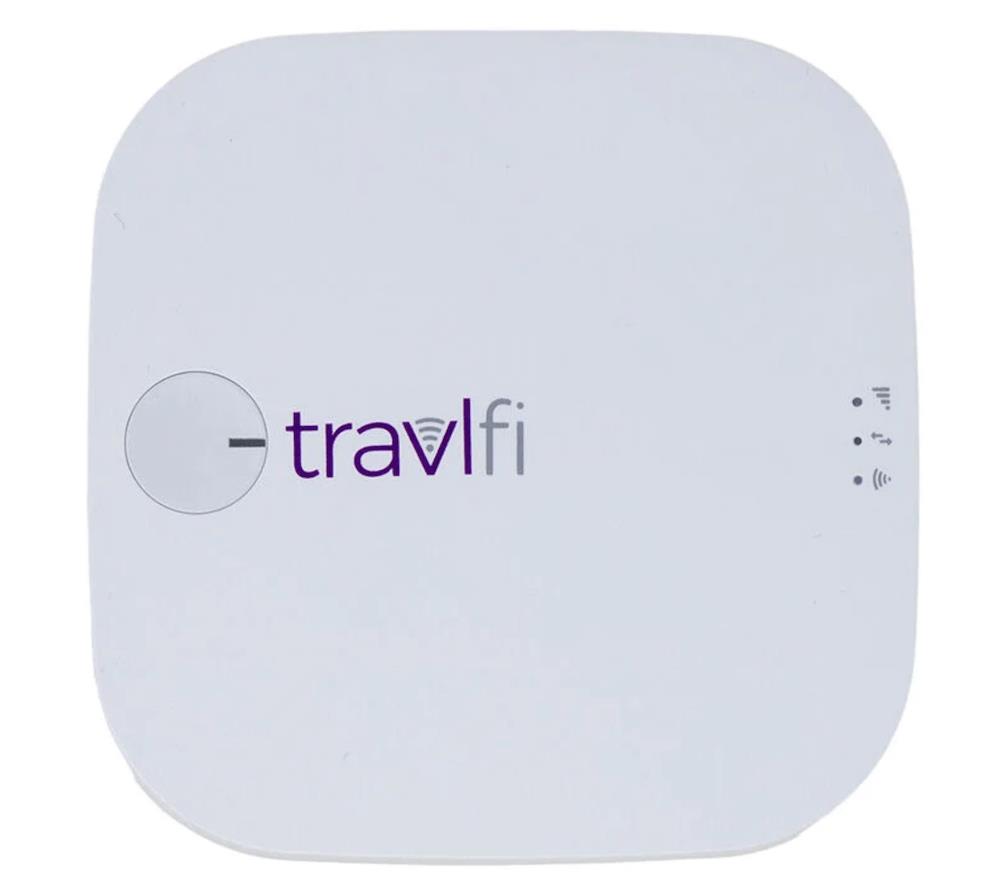
TravlFi RV Wi-Fi Hotspot
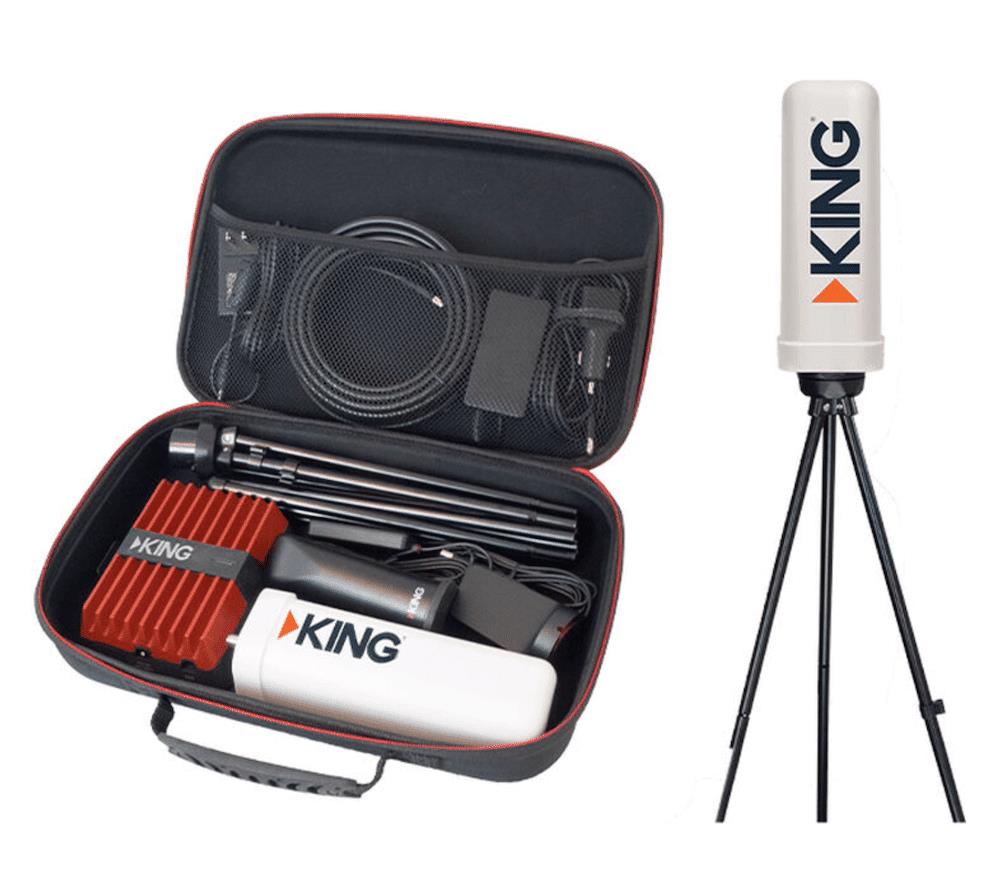
KING Cell Signal Booster
So what’s the difference between a Wi-Fi hotspot and a cellular signal booster?
Wi-Fi hotspots convert a cellular signal acquired from your carrier to a Wi-Fi signal.
They require an additional plan and provide a dedicated network for remote work. They work anywhere there’s a reliable cellular signal and allow you to connect without worrying about other users bogging down your network.
Cellular signal boosters amplify the existing cellular signal on your smartphone or mobile device.
They increase cellular service where it exists but do not create it where no signal is present. A cell signal booster improves connectivity when using your mobile hotspot as a Wi-Fi solution. Still, they’re most effective for improving cell service when boondocking or in campgrounds with natural obstructions that impact reception.
Check out our complete tutorial on cell signal boosters.
Can You Use a Cell Signal Booster with a Wi-Fi Hotspot?
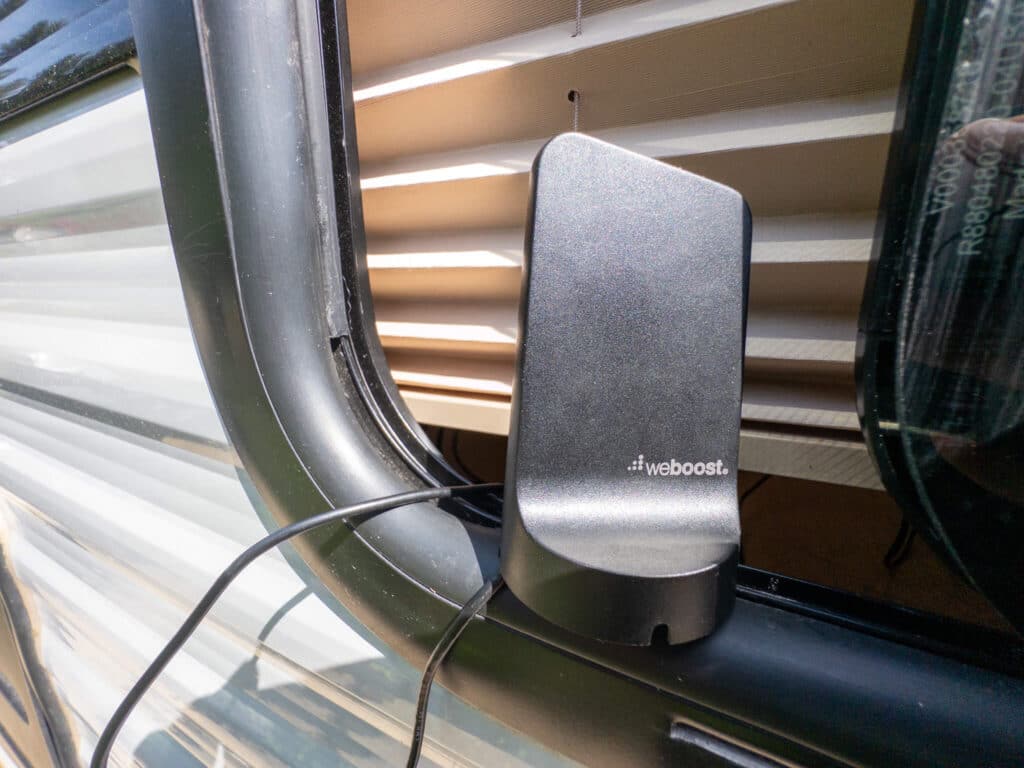
Photo by Camping World
A cell signal booster can be used in conjunction with a mobile RV Wi-Fi hotspot. The signal booster amplifies the existing cell signal before the hotspot converts that signal to a Wi-Fi network.
Still, check with the manufacturers of both products to ensure compatibility before setting them up.
Most recommend placing the hotspot roughly 8-10 feet from the signal booster’s inside antenna. Then, you can adjust the signal booster’s outside antenna and amplifier to achieve the best signal possible for your area.
There are two things to remember to avoid overloading and damaging your hotspot:
- Never place your Wi-Fi hotspot directly next to your signal booster’s inside antenna.
- Never attempt to wire a Wi-Fi hotspot directly into a signal booster’s antenna or amplifier.
What is the Best Wi-Fi Hotspot for RV Use?
Let’s look at our favorite RV Wi-Fi hotspot:
Travlfi Journey1 Hotspot
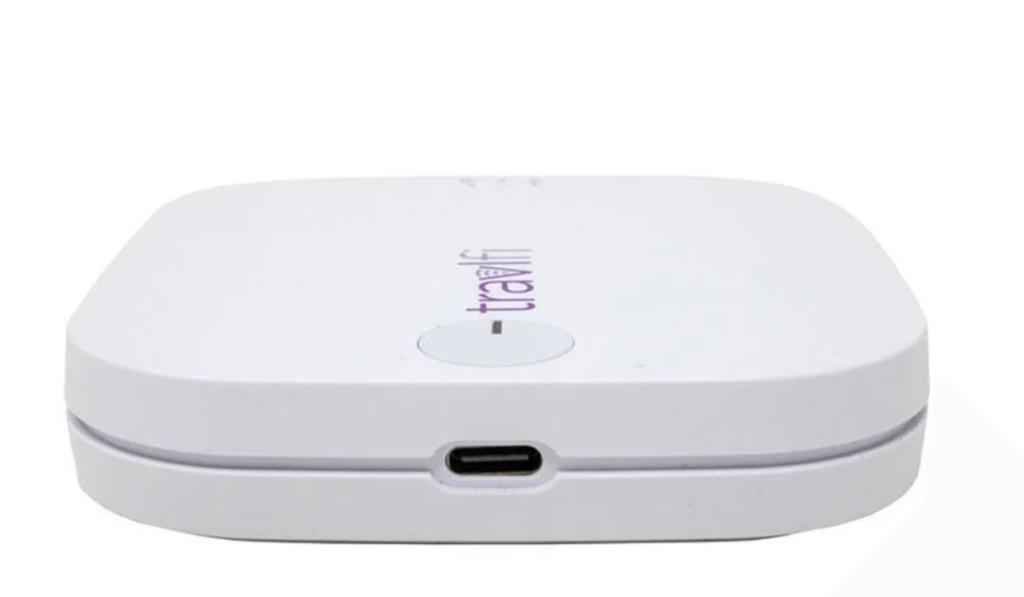
Photo by Camping World
The TravlFi RV hotspot is built with a virtual SIM card that automatically connects to the strongest signal from the major carriers in your location. This means you aren’t limited to a single carrier and aren’t locked into their network regardless of where you travel.
As a result, you get more reliable coverage across all of North America. You don’t have to worry about a long-term contract or enrolling in a pre-paid plan. You pay a monthly bill that you can cancel anytime when you aren’t traveling.
Data plans start as low as $19 a month, and you can purchase add-ons if you plan to travel to Canada or Mexico. Plans start with as little as 2 gigabytes (GB) of data and go up to 200 GB. Their unlimited plan starts at $129 per month.
The hotspot works with up to five devices and has up to ten hours of battery life. It also has a compact storage and carrying case to protect it when you’re in motion. These are just a few reasons the TravlFi hotspot has been cleaning up at recent award shows, including the Best New Product of 2022 from RV Pro and Aftermarket Product of the Year 2022 from the RV Industry Association (RVIA).
Learn more about the TravlFi Journey1 RV Wi-Fi Hotspot.
Other Ways to Get Wi-Fi for RV Use
The following options are technically not hotspots, but they provide alternative solutions for improving internet connectivity in your RV.
Wi-Fi on Steroids GenX MEGA Booster
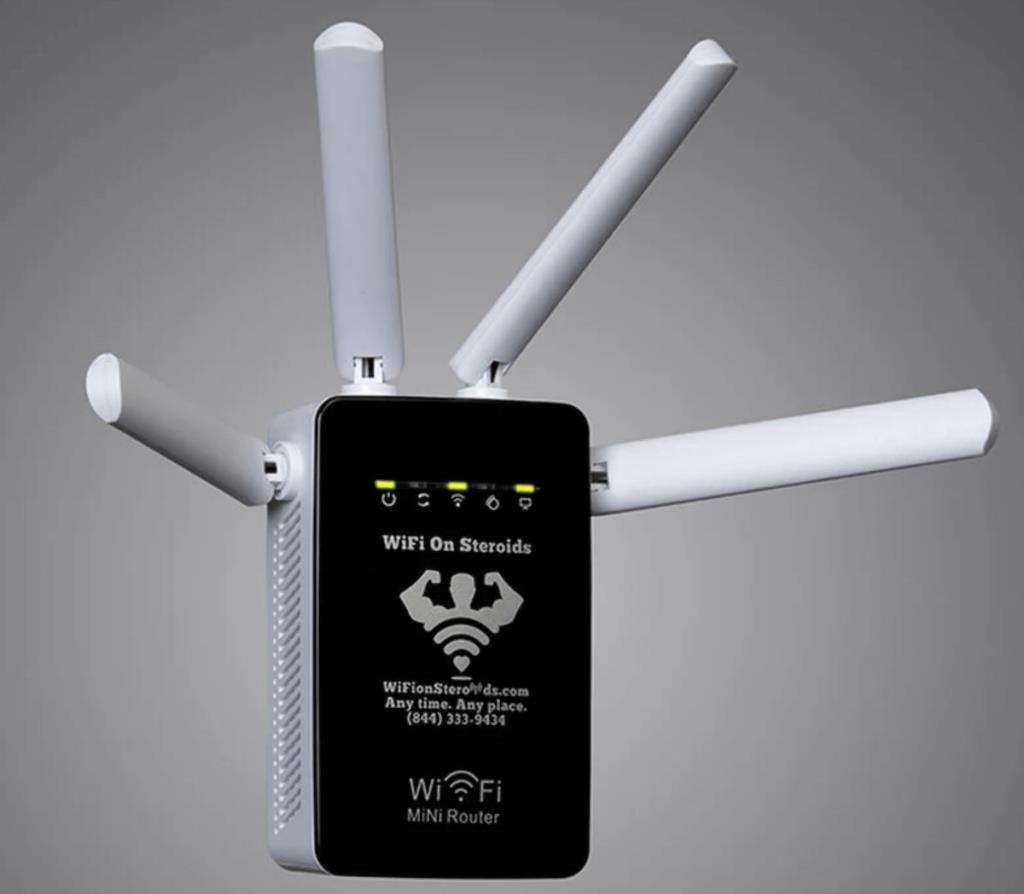
Photo by Camping World
Type: Wi-Fi Range Extender
This range extender requires an existing Wi-Fi signal and can extend it to a factory-rated distance of 1,640 feet. The actual distance will likely be less with natural obstructions, but it’s still a great solution for extending a campground’s signal if it’s barely reaching your site.
It supports wireless transfer speeds up to 300 megabits per second (Mbps) and is easy to use. You simply need to plug it into an AC wall outlet and follow the setup instructions to connect to any free Wi-Fi connection in the US or Canada.
See more about this booster at Camping World.
Winegard Gateway 4G LTE Wi-Fi Router
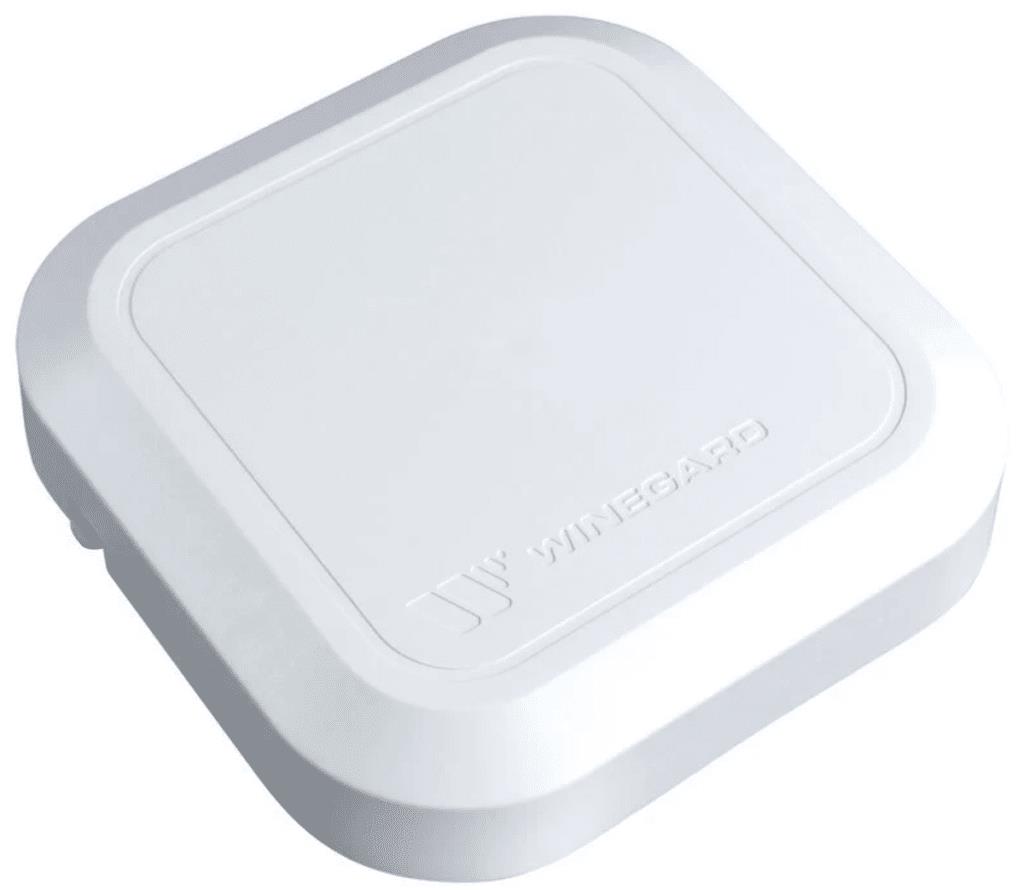
Photo by Camping World
Type: Wi-Fi Router (add-on to the Winegard Air 360+ Antenna)
Winegard’s Gateway Router is designed to be used with the existing Winegard Air 360+ antenna on the top of your RV. If you have this type of antenna, it’s required to activate the preinstalled 4G LTE and Wi-Fi antennas under the dome.
It’s a bit more difficult to install than a plug-and-play option like the GenX MEGA Booster, but it gives you access to the high-performance 4G LTE antenna that can be used in motion or while parked.
The Wi-Fi antenna extends the range and reliability of an existing network by a range of up to a third of a mile. It also includes a GPS antenna that helps to improve your RV’s security through features like ‘Find My Device’ and others.
Learn if this Wi-Fi router is right for your RV.
Winegard Connect 2.0
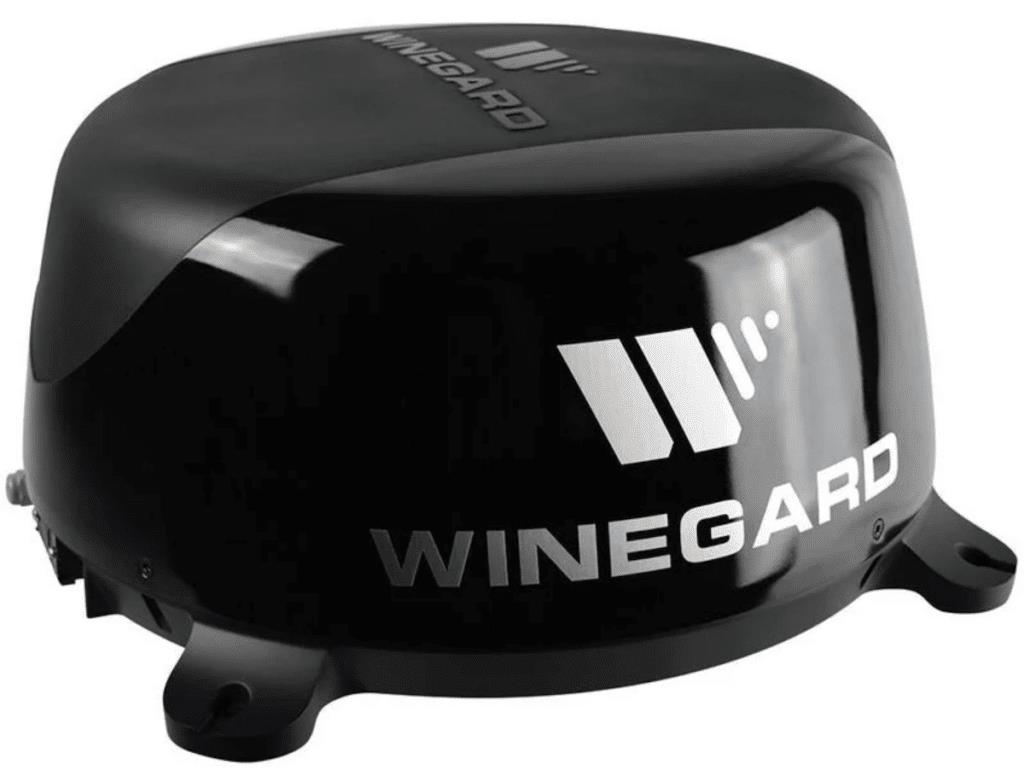
Photo by Camping World
Type: Wi-Fi Repeater
Best used with Winegard, AT&T, or Verizon data plans, the Connect 2.0 rebroadcasts the signal from an existing Wi-Fi or 4G LTE network, allowing you to enjoy faster internet speeds where service is weak.
The dome-style antenna must be installed properly on your RV’s roof and sealed to prevent leaks. This is an installation that should be trusted to a certified technician at your local Camping World Service Center.
The dome covers a total of three Wi-Fi antennas and two 4G LTE antennas. It requires 12-volt power, meaning it’ll work when you aren’t connected to a power pedestal at an RV park. Plus, it has an integrated SIM card that can be swapped if you want to change to a different carrier’s data plan.
Check the price and compatibility with your RV.
It’s unsurprising that internet connectivity was among the most sought-after amenities in recent campground surveys. Listen to Campground U’s podcast to learn about other top-ranking RV park amenities, according to real-life campers.
Do you have any recommendations for mobile hotspots for RV use? Leave your thoughts in the comments below.
The post Do You Need an RV Wi-Fi Hotspot? appeared first on Camping World Blog.
By: Tucker Ballister
Title: Do You Need an RV Wi-Fi Hotspot?
Sourced From: blog.campingworld.com/gear-and-accessories/do-you-need-an-rv-wi-fi-hotspot/
Published Date: Fri, 14 Jul 2023 08:00:00 +0000
---------------------------------------------
 CampingSurvivalistHuntingFishingExploringHikingPrivacy PolicyTerms And Conditions
CampingSurvivalistHuntingFishingExploringHikingPrivacy PolicyTerms And Conditions
